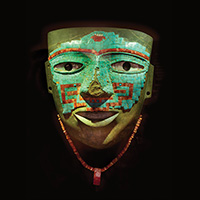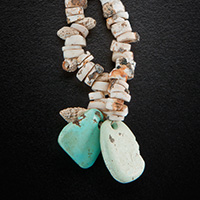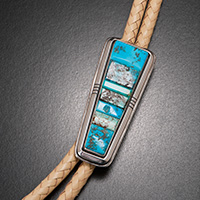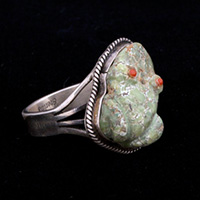Southwest Traditions:
Ancient Traditions
Turquoise has been used and valued in the Southwest for millennia. By a thousand years ago, people at Chaco Canyon may have organized the regional turquoise trade. They certainly made and used a lot of it themselves — tens of thousands of beads and pendants and other pieces were found in Pueblo Bonito. Turquoise was being processed and shaped at smaller sites in the canyon as well as at great houses. Using drills and stone tools, crafts-men and -women made beads, pendants, and tesserae (flat pieces used in mosaics). Even the manufacturing debris was important.
Turquoise debris is found in ancient kivas throughout the Southwest, in niches or under roof supports, probably left as a dedicatory offering.
How extensive turquoise trade networks were hundreds of years ago is the subject of ongoing research. The stone was exchanged within the region, but recent results question whether large quantities were traded to cultures outside the region, including into the Valley of Mexico.
Turquoise appears to have carried the same meaning in the past as in more recent times — water, sky, health, protection, and plenty — everything necessary for a good life.
Turquoise pendant, AD 1300-1650 (17921/11, Origin/Artist: Ancestral Pueblo)



